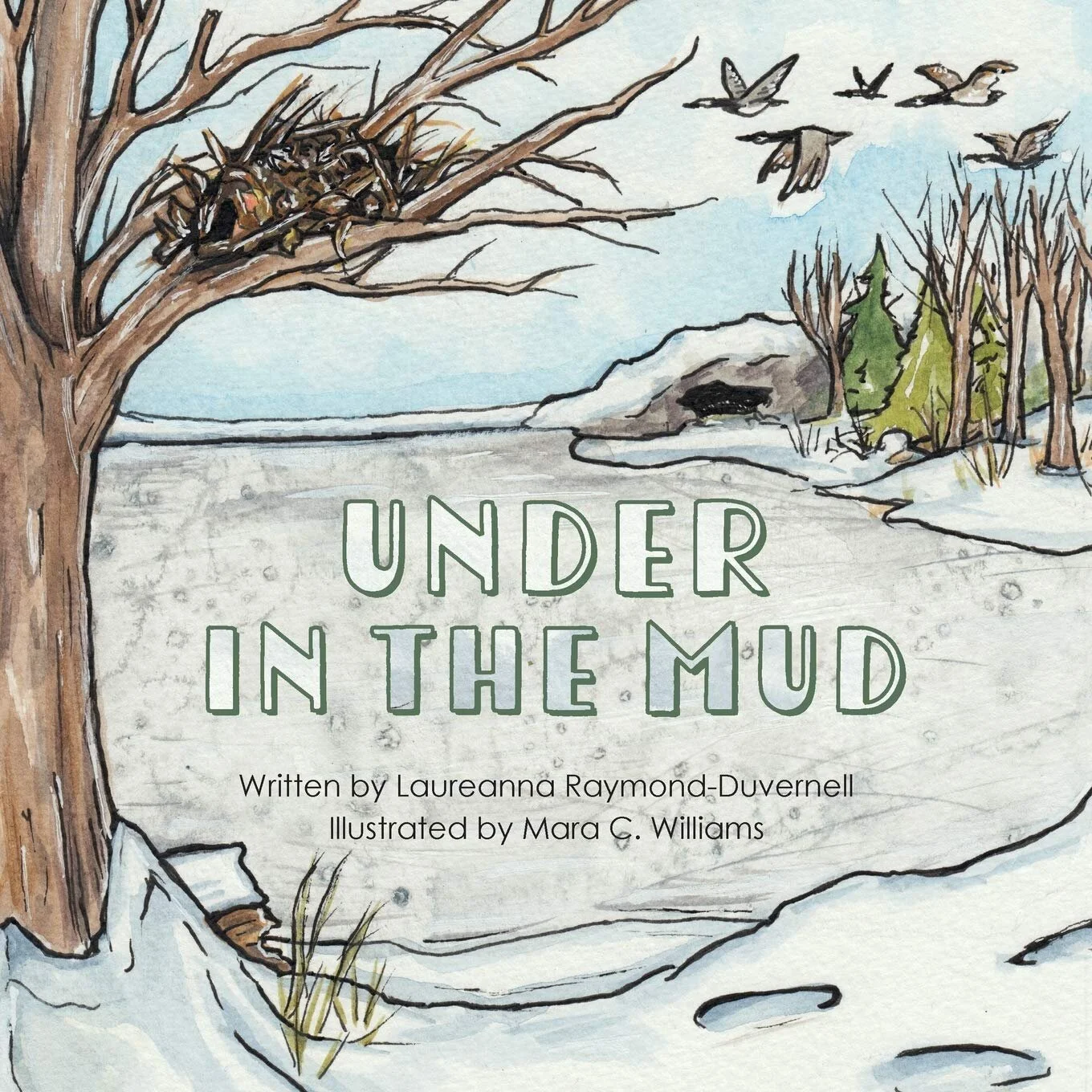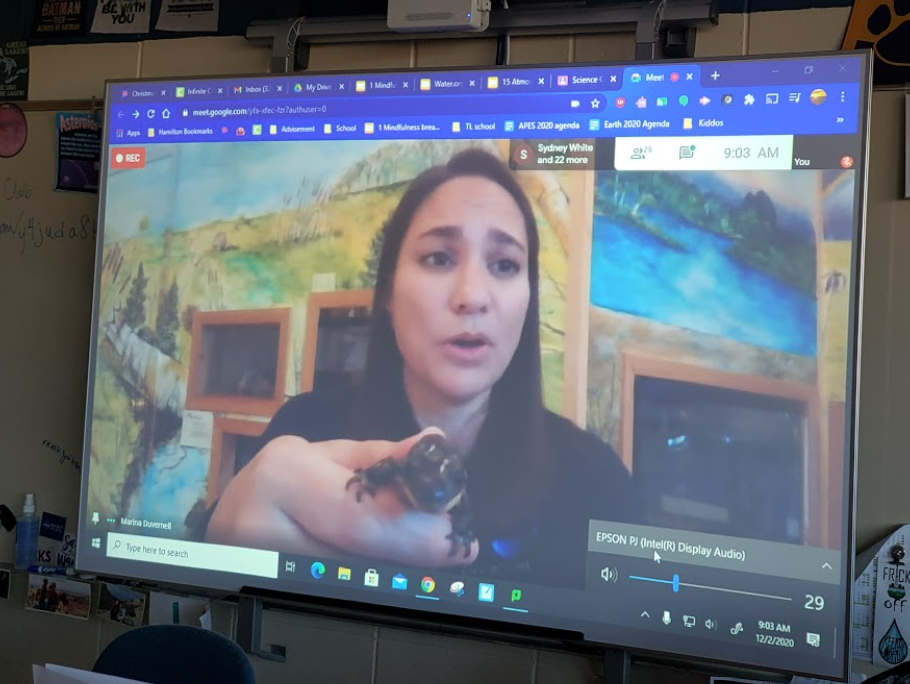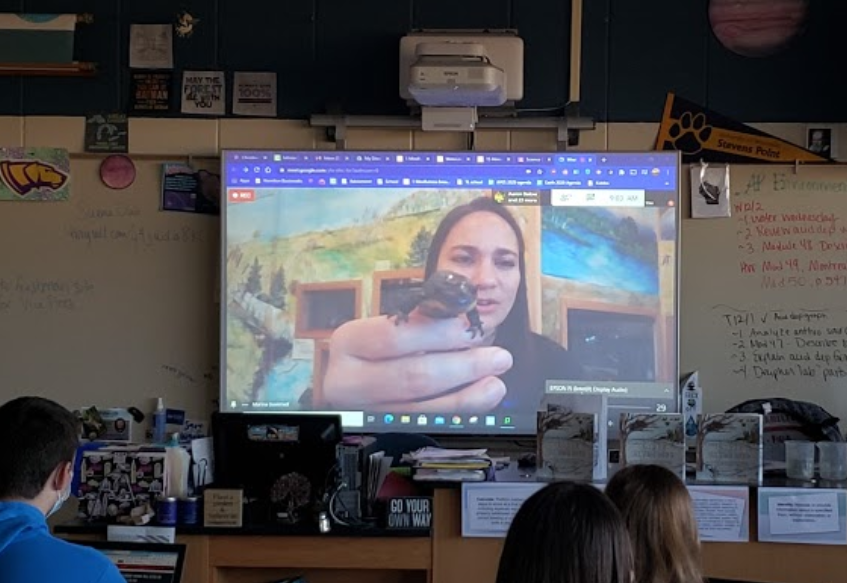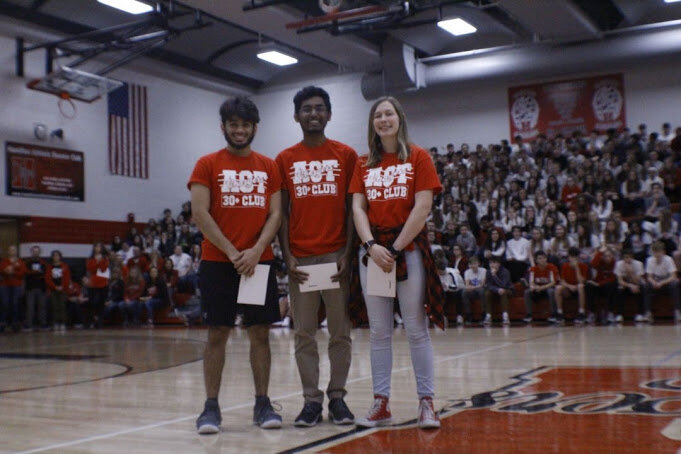Science Club: Under the Mud
On Wednesday, December 4, Hamilton’s Science Club got the opportunity to have a virtual meeting with writer and former Lannon educator, Laureanna Raymond-Duvernell. She now works at E.B. Shurts Environmental Center, the home of the School District of Waukesha’s environmental education program. In the meeting, she gave a demonstration of live animals and talked about her book, Under the Mud.
Under the Mud is a picture book that talks about what different animals do in the winter. Her book was inspired by her child looking for frogs during wintertime and asking about where they go. It can be found here on Orange Hat Publishing’s website.
The first animal that Raymond-Duvernell showed the club was a tiger salamander. Tiger salamanders are native to Wisconsin. In the winter, they find a burrow or dig a hole 6 feet deep so that they don’t freeze. To get air, they breathe through their skin.
Next, she showed the students a painted turtle named Tiny. Painted turtles actually stay active in the winter, and if you look under the ice of ponds and shallow rivers you can see them moving slowly on the floor. They slow down a lot, but they don’t fully hibernate. Turtles can’t breathe water though, and since they can’t reach air because of the ice, they have to breathe by absorbing oxygen through membranes in their bodies.
The last two animals she showed were Flame, a corn snake, and a Madagascar cockroach. Madagascar cockroaches aren’t native to Wisconsin. As the name suggests, they are mainly located in Madagascar. They have grips on their feet to climb and can flatten down so they can fit into small spaces. On their back are black dots called ‘spirides’ which they use to breath.
Lastly, she talked about honey bees. In the winter, honey bees will make a ball around their queen to keep her warm. They rotate from the outside of the ball to the inside so that the whole colony can have a chance to stay warm.
Throughout the meeting, Raymond-Duvernell taught the Science Club many facts and trivia about Wisconsin animals and what they do in the winter. She also read some pages from her book, Under the Mud, when showing animals that were also featured in the book. Learning more about these animals that live in Wisconsin was an interesting and enriching opportunity for Hamilton students. If you want to learn more too, be sure to check out her book!








